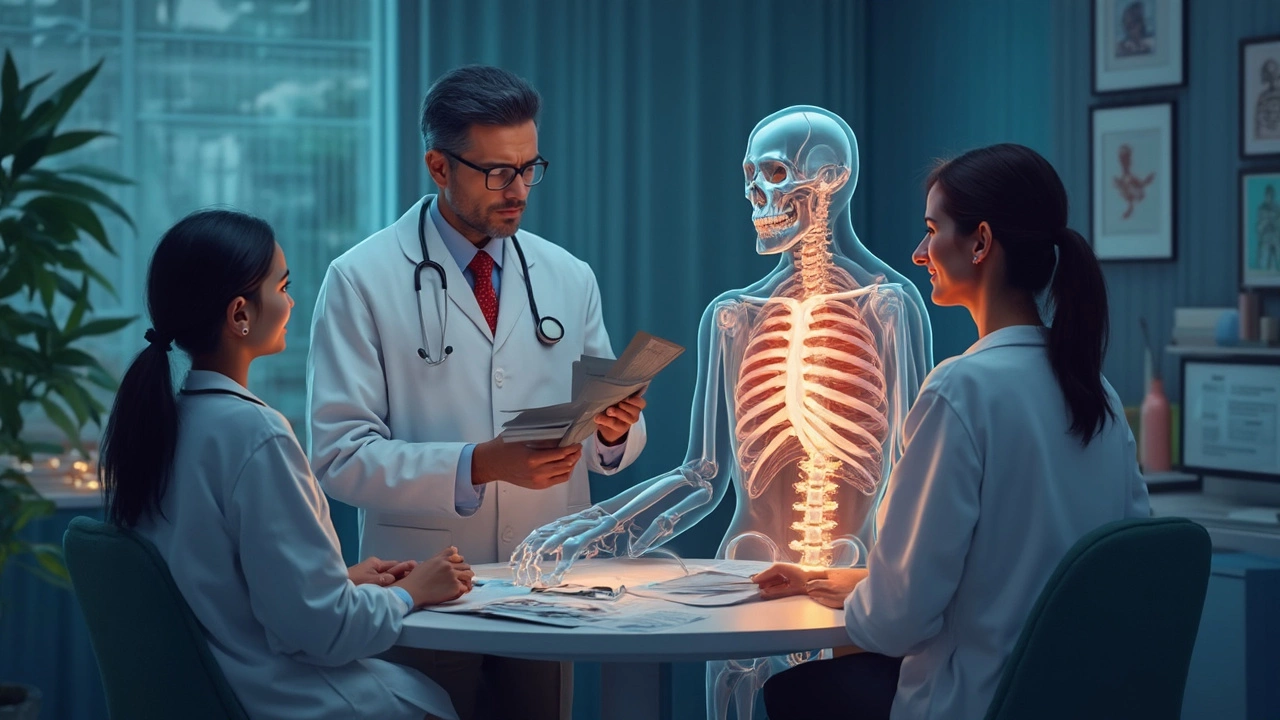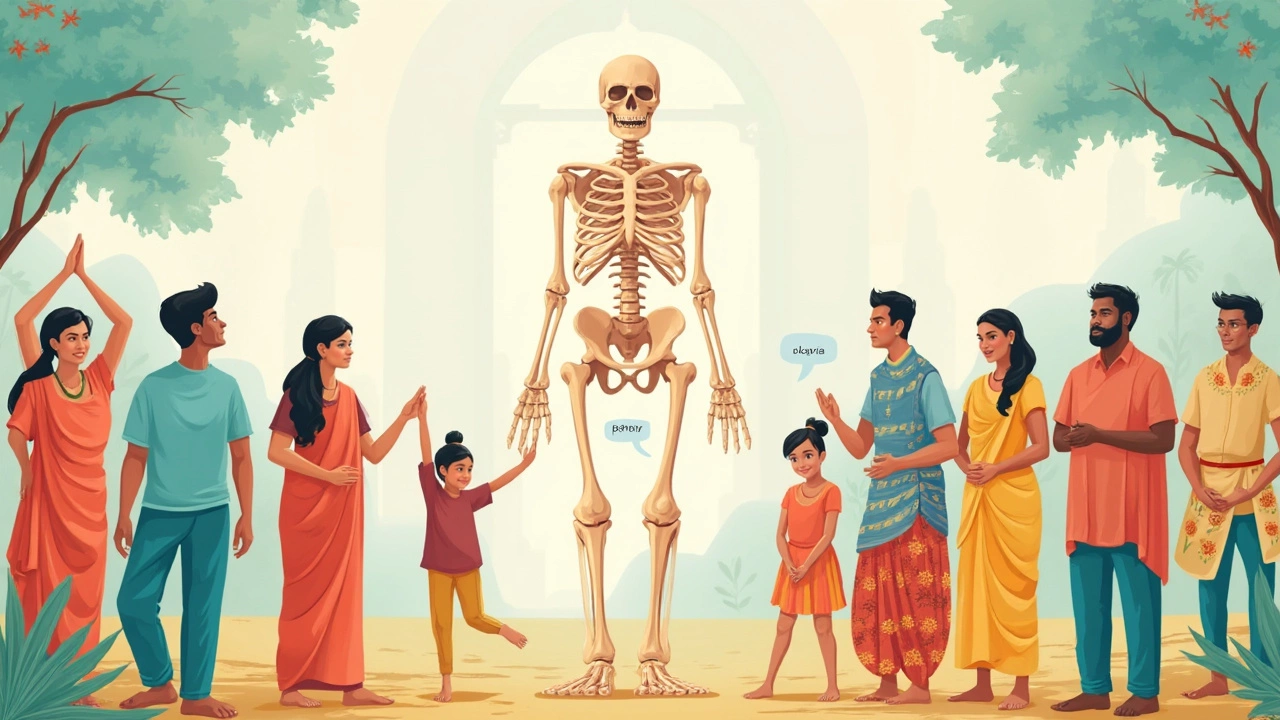-
14

Which Bone Never Heals? Surprising Truth About Fractures
Imagine breaking a bone and being told—sorry, it’s never going to heal. Sounds pretty terrifying, right? Most people don’t know that out of all 206 bones in your body, there’s one pesky spot that almost never fully heals if it gets hurt. Spoiler alert: It’s not your leg, arm, or even your little toe.
But before you start panicking, let’s get straight—most bones, even after a nasty fracture, patch themselves up pretty well. Your body gets to work laying down new bone, sort of like a natural construction crew. Sure, the healing might take weeks or even months, but after the cast comes off, you’re usually back in action.
So what’s the deal with this one bone that shrugs off healing like a teenager ignoring chores? We’re not talking about something obvious. Instead, it’s a tiny bone most people don’t even know exists, hidden right inside your hand or foot. And if you damage it, you’re in for a long ride.
- Breaking the Myth: Do All Bones Heal?
- Introducing the Sesamoid Bone: The Real Outlier
- Why the Sesamoid Bone Doesn’t Heal
- Bone Care Tips: Keep Your Skeleton Healthy
Breaking the Myth: Do All Bones Heal?
Most folks grow up hearing that if you break a bone, it’s no big deal—just slap a cast on it, and you’ll be as good as new. In reality, your body’s ability to heal itself is kind of amazing. Human bones are actually living tissue. When they break, a healing process starts right away. Your body sends out cells to clean up, build a soft callus, and then replace that with new, strong bone. For the majority of breaks, this works out, which is why kids and even adults can bounce back from falls and accidents.
But it’s not a guarantee that every bone treats you this way. There are exceptions. Sometimes healing isn’t perfect. Studies show that about 5–10% of all fractures end up with delayed healing or don’t heal at all. Things like poor blood flow, bad nutrition, certain medications, or just plain bad luck can slow things down.
Let’s get real with some numbers. Here’s a quick look at fracture healing success rates:
| Bone | Average Healing Time | Healing Complications (%) |
|---|---|---|
| Arms/Legs (long bones) | 6–12 weeks | 5–8% |
| Ribs | 3–6 weeks | 1–2% |
| Collarbone | 6–8 weeks | 5% |
| Sesamoid (thumb, toe) | Months to never | Up to 50% |
Now, for most bones, even if healing is slow, doctors have ways to help—like surgery, plates, or bone stimulators. But there’s one sneaky exception that just doesn’t play by the usual rules, earning its reputation as the answer to which bone never heals. You’re about to find out more about this stubborn little guy soon.
Introducing the Sesamoid Bone: The Real Outlier
Let’s get to know the sesamoid bone, the true rebel when it comes to bone healing. Most bones in your body are connected directly to other bones through joints, but sesamoid bones are different. They’re actually found inside tendons, which are the cords that connect muscles to bones. The which bone never heals topic usually comes down to one sesamoid bone in particular—the one under your big toe, called the hallucal sesamoid.
These little bones are tiny but mighty—they help the tendons slide smoothly and make high-pressure areas, like the ball of your foot, a bit tougher. The two sesamoid bones in your big toe act like pulleys for tendons, giving you more power to push off when you walk or run. There are even sesamoid bones in your hands—think of the one under your thumb—but those rarely make trouble.
The big problem comes if you break the sesamoid bone under your big toe. Because it’s small, surrounded by tendons, and has a poor blood supply, it just doesn’t heal like your arm or shin would. Blood is what brings the cells for new bone growth, so without enough of it flowing in, repair doesn’t happen well. That’s why a busted hallucal sesamoid often means lifelong pain or stiffness, unless you catch it super early and take major steps to rest it.
Fun fact—because these injuries are common with runners, dancers, and basketball players, doctors sometimes call it "turf toe" if the joint is sprained or the bone is stressed. If you suspect you’ve hurt this little guy, don’t mess around. Rest, ice, and see an orthopedic doctor, especially if the pain keeps nagging. The sooner you deal with a sesamoid injury, the better your odds are of dodging long-term problems.

Why the Sesamoid Bone Doesn’t Heal
Here’s the plain truth—when it comes to the sesamoid bone, your body’s natural repair system hits a dead end. The most famous sesamoid bone sits right under your big toe joint. Ever tried pushing off your toe while walking or running? That little bone takes a lot of the force, acting like a built-in shock absorber. But get this: it’s also one of the few bones that, if fractured, almost never heals completely on its own.
So why is the sesamoid bone so stubborn about healing? The biggest issue is blood flow. Most bones get plenty of blood supply, and the blood brings all the good stuff—oxygen, nutrients, and special cells that help patch up any damage. The sesamoid bone is different. Its blood supply is weak at best.
Here’s a solid quote from Dr. John Kennedy, a known orthopedic surgeon at NYU Langone Health:
“Sesamoid bones have very limited vascularity, which means that when they are injured, the body’s normal healing response can’t operate at full capacity. That’s why non-union and chronic pain are so common with sesamoid injuries.”
Another kicker—this bone has to deal with a crazy amount of pressure every time you walk, run, or jump. Most folks try to push through the pain, but that just keeps the bone from getting any rest. Even with crutches or special boots, complete healing is rare.
- Weak blood flow means fewer healing cells reach the area.
- The position under the big toe means it’s constantly under stress.
- People often don’t notice a fracture until it hurts for weeks or months—which gives injuries more time to get worse.
This all adds up to one thing: if you mess up your sesamoid bone, hoping for total healing is just wishful thinking. It’s the outlier—the answer to the big question of which bone never heals.
Bone Care Tips: Keep Your Skeleton Healthy
Worried about keeping your bones tough and fracture-free? You’re not alone. Most people think of bones as solid rocks, but they’re alive and need good care just like any other body part. Taking a few smart steps can make a huge difference, whether you’re trying to avoid breaks or bounce back from one.
First things first, your diet matters way more than you might guess. Calcium and vitamin D are the MVPs for strong bones. Dairy, leafy greens, and little fish like sardines are loaded with calcium. For vitamin D, sunlight is your best buddy—just 15 minutes on your arms and face can help your body make enough. Here’s a quick look at how much you need every day:
| Nutrient | Daily Recommended Amount (Adults) | Best Sources |
|---|---|---|
| Calcium | 1000-1200 mg | Milk, cheese, yogurt, tofu |
| Vitamin D | 600-800 IU | Sunlight, fatty fish, eggs |
Exercise isn’t just about muscles—bones love it too. Weight-bearing moves like walking, jogging, or squats give your bones a reason to get denser. If you just sit all day, your bones get lazy. Shoot for at least 30 minutes a day of moving around, even if it’s just a brisk walk. Your skeleton will thank you.
Watch out for habits that zap bone strength. Smoking and heavy drinking can mess with your calcium levels and slow down bone repair. Even too much soda—yeah, that’s right—can make bones weaker due to extra phosphorus messing up your calcium balance.
- Eat a mix of protein, vegetables, and dairy for bone-building nutrients.
- Don’t skip annual checkups—your doctor can spot early bone loss with simple scans.
- If you’ve got a family history of osteoporosis, talk to your doctor about supplements or meds.
- Protect your feet—especially those sesamoid bones in your hands and toes—with good shoes, especially for runners or anyone who’s on their feet all day.
If you have kids or older adults at home, double down on these tips. Young bones are growing, and older ones are shrinking, so proper nutrition and good daily habits matter even more.
Remember, even that notorious which bone never heals will stand a better chance if the rest of you is as healthy as possible. Bones might seem simple, but giving them the right fuel and care is a real game changer.